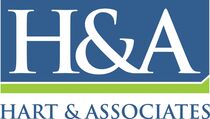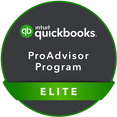|
Recent security breaches at Equifax and other companies have left many people thinking once again about identity theft. The best thing is to do everything you can to prevent it from happening to you. Here are a few tips to help you reduce your risk of being a victim of identity theft as well as how to reduce the damage from security breaches of your personal data from sources you can’t control. Discontinue paper statements that are mailed. Paper bank, brokerage, and credit card statements that are mailed can be misboxed, intercepted, lost, or stolen, and the information can fall into dishonest hands. Instead, discontinue paper statements, and access them via your online account where you can review, print, or save them each month for your records. Rent a private mail box. If you have trouble with mail theft in your area and cannot check your mailbox as soon as the mail is delivered, consider renting a post office box or a private mail box. These are especially handy if you travel a lot or have many packages delivered and no one is home to sign for them. They cost up to $300 per year, and you can find them at places like The UPS Store, Mailboxes Etc., Postal Annex, or your local post office. Shred your trash. If you throw out junk mail offers for new credit cards or bank accounts, be sure to shred that paper and anything else that might contain private information. Don’t email secure data. Credit card numbers, social security numbers, and passwords should not be sent via email unless the email is encrypted or secure. The odds of something happening are low, but could happen. Use different passwords for different account groups. Even the most secure-minded person uses the same password for many different accounts. You can too, but be smart about it. Use a unique password for your bank that you do not use anywhere else. Be smart about your password use, and make your password difficult based on the level of information that is at risk. Choose hard passwords. It is painful, but choosing long, hard passwords can help throw off thieves. Include at least one capital letter, one special character, and one number in your password. Make it nice and long. And do not use common words, your birthday, parts of your social security, or your phone number in your password. When it is provided, use a random password generator. And do not let your browser automatically save your banking passwords for you. Close inactive accounts. If you no longer use an account you signed up for, close it rather than let it linger. It will reduce your risk. Be mindful, though; if you close some credit card accounts, your credit score could be adversely affected even if there has been no activity for a while. Consider freezing your credit. If you do not need a new credit card or loan or are not planning a large purchase soon, consider freezing your credit. When you credit is frozen or secure, no one can run checks against it. Any identity thieves would not be able to take a loan out in your name. Avoid unsecured Wi-Fi. Although the ambience is nice at a Starbucks, the Wi-Fi is not secure, and connecting and doing your work all day long there is a big security risk. Consider signing up for a private, secure VPN service instead. Monitor all account activity. Check your bank and credit card accounts frequently, and turn on all alerts and fraud notifications. You can turn on alerts for when transactions exceed a dollar amount and when your bank balance goes below a certain amount. Getting emails or text messages on your activity can help you stay on top of things. Consider identity theft insurance. Identity theft insurance is now common, and you can get it and fraud protection for your business as well as for individuals. If you are a victim, it reimburses you for the cost of restoring your credit. Check with your local insurance agent for more information. We hope it never happens to you. Try these tips to reduce your risk of identity theft. This is general information and should not be acted upon without first determining its application to your specific situation. Please contact your attorney, CPA or tax advisor for additional details.
Year-end is just around the corner, and that means a couple of administrative tasks are necessary to take care of bookkeeping and tax chores. Here are a couple of tips to make year-end go smoother. Cleaning up Things will go a lot smoother if you reach out to your vendors and employees and get their help to update your records.
It is also time to clean up any account balances that need to be reclassified or corrected.
Maximizing deductions Here are a just a few ways to maximize deductions:
Getting organized Create a place in your home or office or a special file on your computer to store tax-related documents, such as W-2s, brokerage statements, and tax returns. Convert them to PDF format if they are not already, and upload them to your accountant’s secure client portal as you get them. With all this great preparation, you’ll find tax season easier than ever and a chore that you can mark off your to-do list early. If you need assistance with any of these tasks, please reach out to us. We are happy to help in any way we can! This is general information and should not be acted upon without first determining its application to your specific situation. Please contact your CPA or tax advisor for additional details.
There are many to choose from, and one way to narrow it down is to find one that will help you do your job better. Look for an app that supports your administrative work, such as a new phone system, video conferencing, scheduling, cloud storage, shipping, document management, or data entry automation. Or you might have a need for apps in marketing and sales, such as social media, customer relationship managers, email list management, or web applications. If you are not sure where to look, ask your friends what has saved them the most time. Also, feel free to reach out to us to discuss apps that may support your accounting needs. Upgrade your accounting system. If your accounting system is not updated to the current version, it may be time to perform the upgrade. Check with us for advice on the current version and any new features that you can benefit from. Develop your 2018 prosperity plan. The word “budget” has somewhat of a negative connotation, but a prosperity plan sounds like fun. They are the same, of course, and the idea is to determine what goals you want to reach so that you have a clear path to making your desired prosperity a reality. Create a theme or mantra. Want to stay more focused in 2018? A theme or mantra can remind you to stay on track with a particular project or goal. Brainstorm a phrase that will guide you in 2018. Here are some examples:
Delegate something that is not getting done. One way to feel amazingly rejuvenated and re-energized about your business is to give someone an item that has been on your to-do list for far too long. It amazingly gets done right before your eyes. We look forward to working with you this next year in support of your business goals and success! Please contact us for a review of your accounting processes and systems to ensure you are getting the best support for your business. This is general information and should not be acted upon without first determining its application to your specific situation. Please contact your CPA or tax advisor for additional details.
A good payroll system allows employees to “onboard” themselves, completing the I-9, W-4, and direct deposit authorizations electronically, even before they show up for their first day. You will still need to ask for ID on their first working day, but at least you won’t have to do their paperwork for them. Integrate Employee Benefits Rather than hire several separate companies to handle benefits, some payroll systems allow you to integrate benefits solutions right in their dashboard. That way, you will not have to re-enter employee data in multiple systems, which often gets out of sync. Deductions and payments can also be integrated to save accounting time. Delegate Time Sheet Entry Require non-exempt employees to enter their own time; all you should have to do is approve it. The right time sheet application can take care of that, and a great time sheet application will allow employees to enter time from multiple options, including time card, cell phone, and others. Eliminate the Annual Worker’s Compensation Audit Tie your worker’s compensation vendor to your accounting system, and you will be able to avoid that time-consuming annual reconciliation report required by your worker’s compensation insurance company. You can also avoid the large annual payment because the insurance will be taken out each payroll cycle. Reduce the Frequency of Payroll It is not always possible, but if you can pay employees less frequently, you might be able to cut your payroll time in half. Pay weekly employees every two weeks or pay bi-weekly employees monthly. Reducing payroll frequency boosts cash flow as well. Try one of these five ideas to streamline your payroll time and costs in your business. In addition, feel free to reach out to us to discuss your payroll needs and how we can be of support to your success! This is general information and should not be acted upon without first determining its application to your specific situation. Please contact your CPA or tax advisor for additional details.
Two Types of Accounts There are two major types of accounts:
Three Purposes A chart of accounts should meet three needs:
Taxes Your accounts could be the same as (or be able to be grouped into) the lines on your tax return. You can find a copy of the tax form you fill out. For example, a sole proprietor will use a Schedule C of the 1040, and a corporation will complete an 1120. There are a few special needs, such as meals and entertainment which are only partially deductible, to which you need to pay special attention. We can help you with that. You can also see this article.) Aha As small business owners, we work with a gut feel, but when you see what you have made or spent in black and white, it takes on a whole new level of meaning. Your income statement and other reports should do that for you. If they don’t, you may not have your accounts set up right. Revenue Think about how you want to see your revenue:
We can help you brainstorm based on your industry and type of business. Please contact us to schedule a review of your current Chart of Accounts and needs. Actionable Intelligence If you have been putting all your revenue into one revenue account, it will be exciting the first time you see your new Profit and Loss statement. If you have been breaking out your revenue but it has not led to any actionable change in your business, then there may be a better way to break it out. If you are happy with the way your revenue is broken out, then think about how you can take it to the next level. Once you see your new chart of accounts, you will likely have even more questions. The chart of accounts can be an evolving entity, designed to serve your business needs. This is general information and should not be acted upon without first determining its application to your specific situation. Please contact your CPA or tax advisor for additional details.
|
AuthorSuccessfully meeting the challenges inherent to new and smaller businesses provides me with a special type of satisfaction. Archives
February 2022
Categories
All
|






 RSS Feed
RSS Feed







